This exquisite work is an accomplished example of the type of portrait in vogue in England during the last half of the seventeenth century. The highly keyed pallet of rich mauves of the dress is particularly beautiful. The billowing sleeves and the hairstyle help to date this painting to the early 1660’s when they were fashionable (just before the centrally-parted curled hair of the early 1670’s). Pearls were an obligatory accompaniment since at least the 1630s and here they are worn as a necklace and as pear-shaped earrings called ‘unions d’excellence’, reflecting the difficulty of finding perfectly matched pearls of such large size. They could range up to 20mm in diameter. Although the lady could afford pearls of her own, pearls were also a common prop in artist’s studios of the time.
It was common to commission a portrait to mark important occasions such as a betrothal or birth - but it was also common for both men and woman to commission portraits of themselves to give as gifts to their family or friends (and also to keep up to date with current fashions).
The motif of the horizontal ledge employed in this portrait is quite unusual. Its inclusion affords the portrait with a sense of uniqueness making it stand out from the legions of others that were painted at the time.
The first recorded owner of the estate was Robert de Shrubeland, although there is evidence of occupation on the site since the Roman period. The previous Tudor-style Shrubland Hall was built by the Booth family in the early 16th century. The present Grade II listed hall was built in the 1770’s for the Revd. John Bacons. The property changed hands a few times until it was purchased in 1798 by Sir William Fowle Middleton, 1st Baronet. It descended from him to the 7th Baron de Saumarez, Eric Saumarez who sold the property in 2006 following the death of Lord de Saumarez's father in 1991 and his mother, Lady de Saumarez, in 2004. The property was one of finest stately halls, with spectacular gardens and more than 1,300 acres. The equal, it was said, was Queen Victoria’s Osborne House on the Isle of Wight.
Baron de Saumarez, of the Island of Guernsey, is a title in the peerage of the United Kingdom created on 15 September 1831 for the naval commander Admiral Sir James Saumarez, 1st Baronet. The ancestral family seat was at Le Guet, Castel, on the island of Guernsey, with a second seat at Shrubland Park. The Saumarez Manor estate in Guernsey belongs to a senior line of the family from which the Barons de Saumarez are descended: Matthew de Sausmarez (1718–1778), father of the first baron, was the younger brother of John (1706–1774), of Sausmarez Manor.
Presented in a beautiful antique carved and gilded frame with acorns and acanthus leaves.
Sir Peter Lely’s character and art dominated the art world of the second half of the seventeenth century in England. Everyone of consequence in his age sat to him, and it is in his portraits that we form our conception of English portraiture during the Protectorate and years following the Restoration.
He was the son of a Dutch military officer, and was born in Germany at Soest in Westphalia in 1618. He studied in Haarlem before moving to London in 1641, and in 1647 he became a freeman of the Painter-Stainers’ Company. Initially, Lely painted landscapes, religious, and mythological scenes, however, he quickly recognised the strength of the English market for portraiture and this is where he turned his attention. He was employed by the Duke of Northumberland, who had the royal children in his care, and he was able to study the Northumberland Collection of works by Van Dyke and Dobson. By the end of the Commonwealth, he had become the best-known portraitist in England. In 1661 he was appointed Principal Painter to the King and from then on he maintained a busy and successful practice painting the most elite and influential members of the court and of everyone of importance. His studio was prolific and employed many assistants, as was the common studio method. His success thus meant that he established the basic English portrait style for decades.
Lely was a connoisseur and was known for his own fine art collection. By the end of his life he had assembled one the finest non-princely collections in Europe including more than 25 of Van Dyke’s major English works, Old Masters including Veronese, Titian, Claude Lorrain and Rubens, and a fabulous collection of drawings.
Provenance: The Saumarez Baronets at Shrubland Park, England
Measurements: Height 96.5cm, Width 83cm framed (Height 38”, Width 32.5” framed)



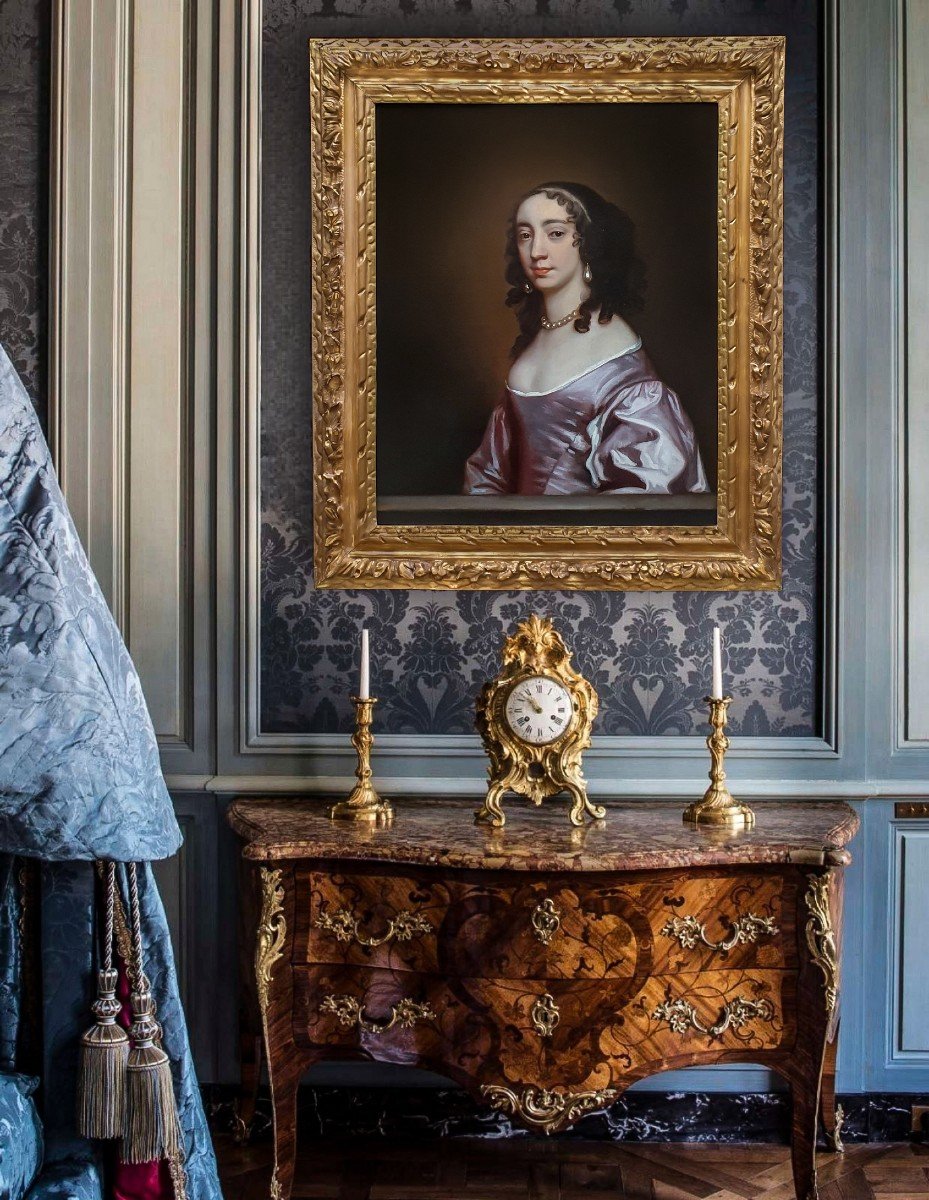














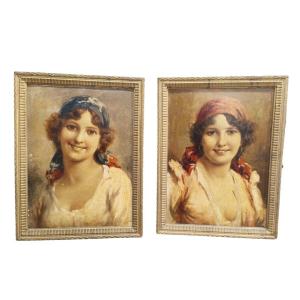
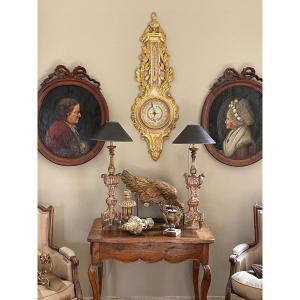
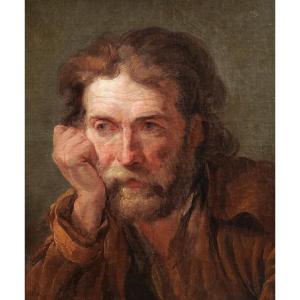
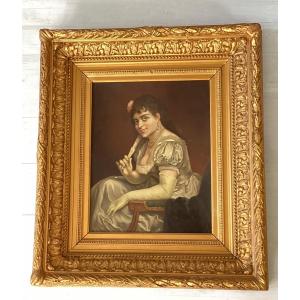





 Le Magazine de PROANTIC
Le Magazine de PROANTIC TRÉSORS Magazine
TRÉSORS Magazine Rivista Artiquariato
Rivista Artiquariato
